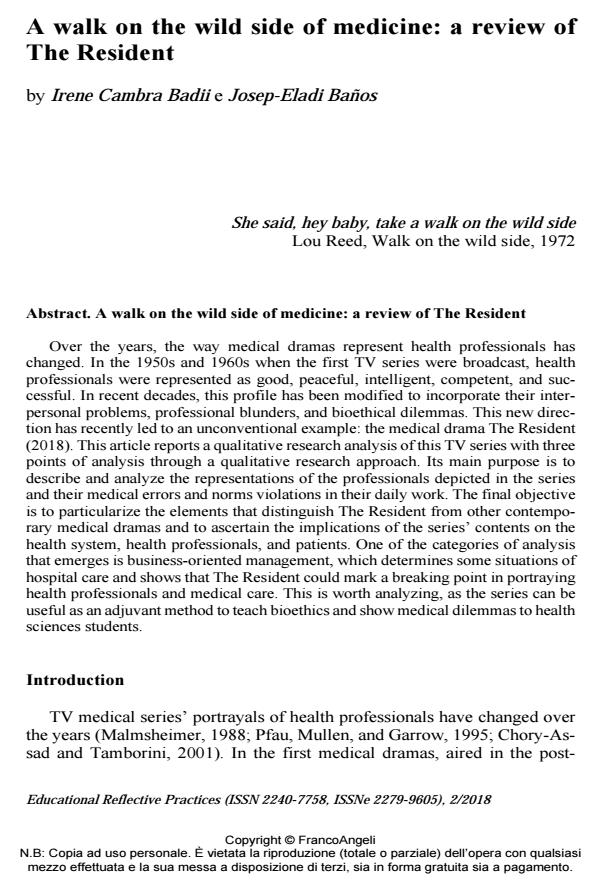A walk on the wild side of medicine: a review of The Resident
Journal title EDUCATIONAL REFLECTIVE PRACTICES
Author/s Irene Cambra Badii , Josep-Eladi Baños
Publishing Year 2019 Issue 2018/2
Language Italian Pages 14 P. 52-65 File size 190 KB
DOI 10.3280/ERP2018-002004
DOI is like a bar code for intellectual property: to have more infomation
click here
Below, you can see the article first page
If you want to buy this article in PDF format, you can do it, following the instructions to buy download credits

FrancoAngeli is member of Publishers International Linking Association, Inc (PILA), a not-for-profit association which run the CrossRef service enabling links to and from online scholarly content.
Over the years, the way medical dramas represent health professionals has changed. In the 1950s and 1960s when the first TV series were broadcast, health professionals were represented as good, peaceful, intelligent, competent, and suc-cessful. In recent decades, this profile has been modified to incorporate their inter-personal problems, professional blunders, and bioethical dilemmas. This new di-rection has recently led to an unconventional example: the medical drama The Resident (2018). This article reports a qualitative research analysis of this TV series with three points of analysis through a qualitative research approach. Its main pur-pose is to describe and analyze the representations of the professionals depicted in the series and their medical errors and norms violations in their daily work. The final objective is to particularize the elements that distinguish The Resident from other contemporary medical dramas and to ascertain the implications of the series’ contents on the health system, health professionals, and patients. One of the categories of analysis that emerges is business-oriented management, which determines some situations of hospital care and shows that The Resident could mark a breaking point in portraying health professionals and medical care. This is worth analyzing, as the series can be useful as an adjuvant method to teach bioethics and show medical dilemmas to health sciences students.
- Desde Marcus Welby, M.D. hasta The resident: los cambios en las representaciones de los médicos en las series de televisión Irene Cambra-Badii, Elena Guardiola, Josep-E. Baños, in Revista de Medicina y Cine /2020 pp.91
DOI: 10.14201/rmc202016287102
Irene Cambra Badii , Josep-Eladi Baños, A walk on the wild side of medicine: a review of The Resident in "EDUCATIONAL REFLECTIVE PRACTICES" 2/2018, pp 52-65, DOI: 10.3280/ERP2018-002004